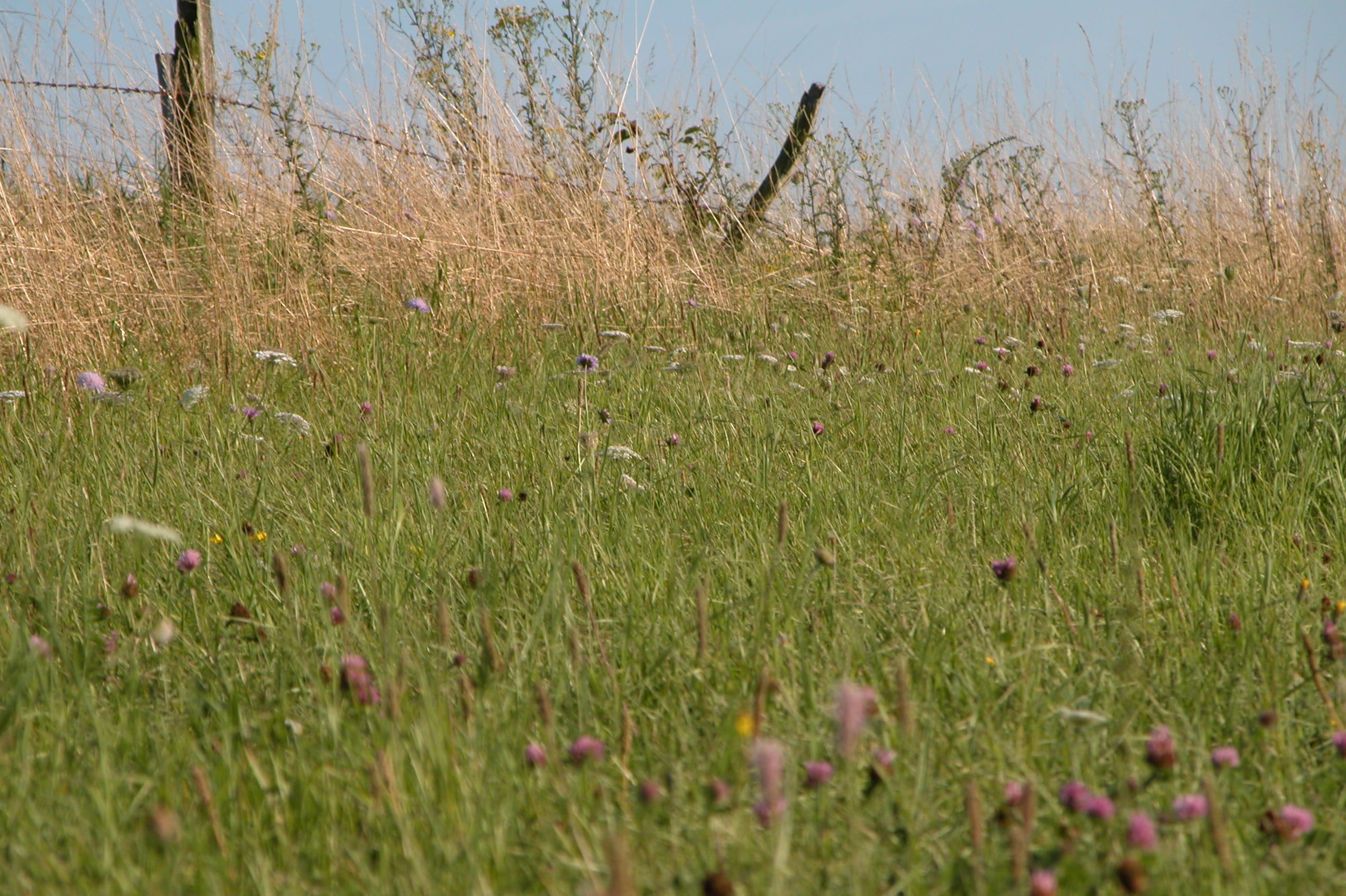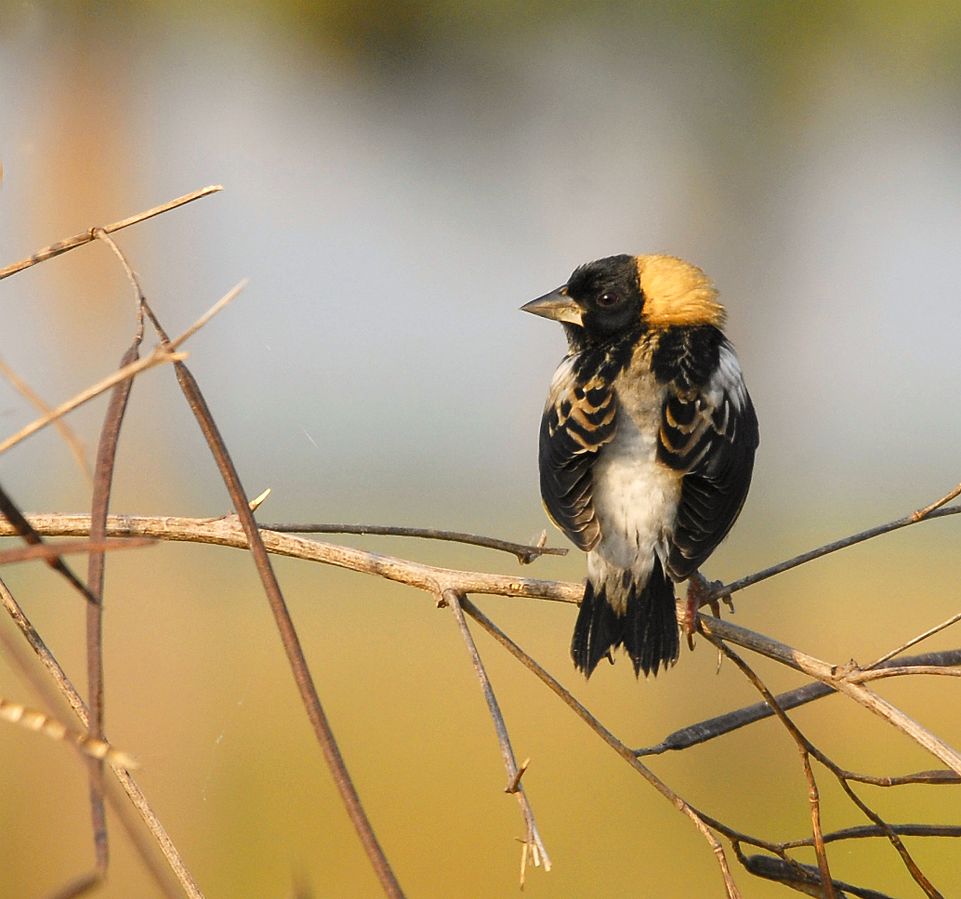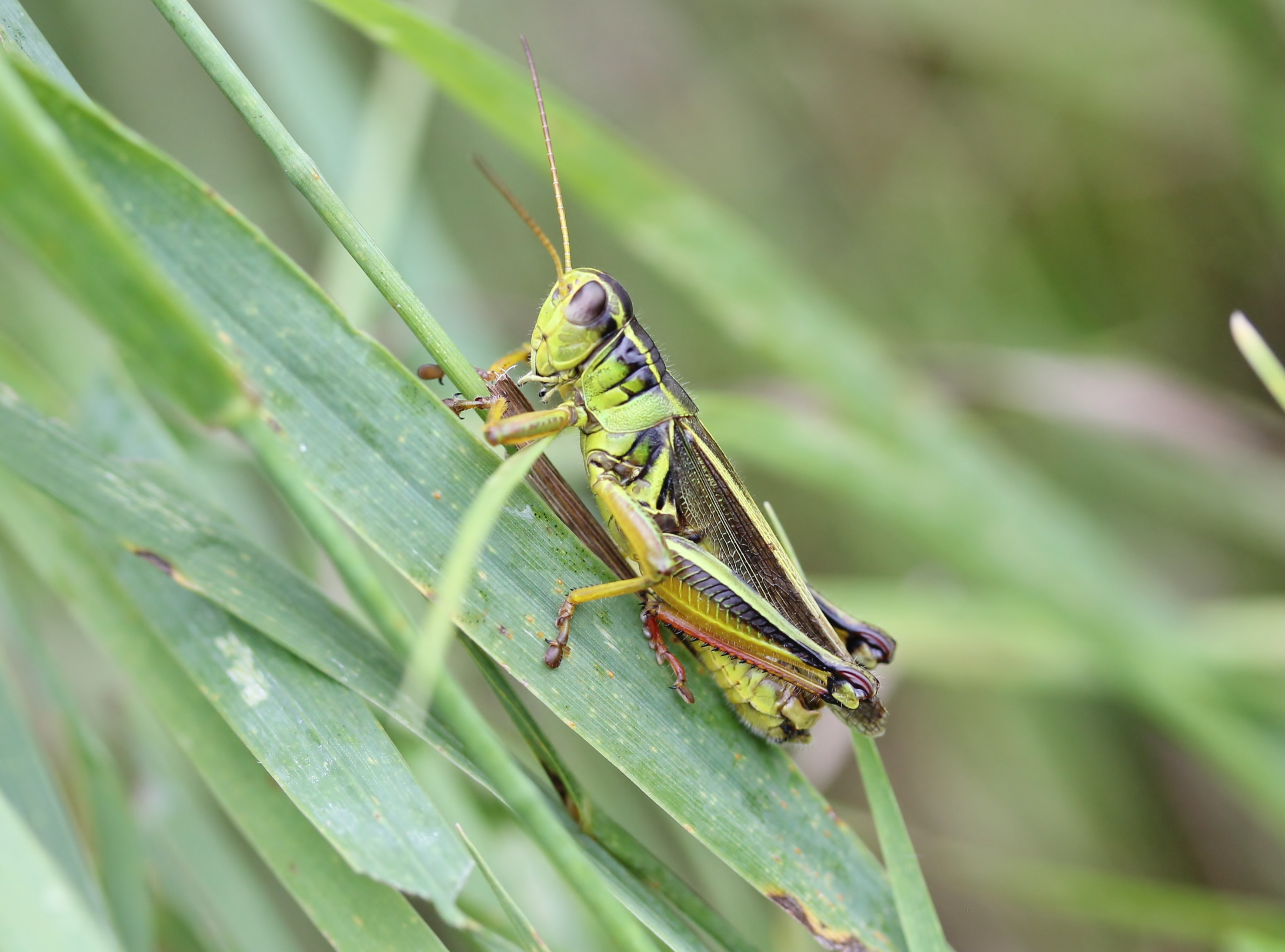Meadows
Meadows of Huron County
Meadows are sunny, open areas that support a wide diversity of flowers, grasses, insects, and wildlife. They mitigate the effects of climate change by sequestering carbon, and support many pollinators that we rely on for food production. Dry areas may have wildflowers including milkweed, goldenrod, and Black-eyed Susan, with wetter areas dominated by sedges and grasses. Rich habitat is created for many species including butterflies, songbirds, mammals, and amphibians. Small prey species attract hawks, owls, and snakes to form a complex food web and diverse ecological community.


The loss of Meadows
Although meadows are beautiful and ecologically important, intensification of agriculture and the expansion of urban areas have resulted in the loss of most natural meadow habitats. As Ontario’s meadows disappeared, many birds and pollinators quickly followed suit, and are now found on Canada’s list of endangered and threatened species. In Huron County, the most common meadow occurs on retired agricultural land where trees have been cleared to create cropland or pasture. This meadow type slowly transitions into forest as trees become established.
The HSC has been working with the Nature Conservancy of Canada (NCC) to convert agricultural fields to meadow habitat in Huron County. Restored meadows will provide vital habitat for many at-risk species including Monarch butterflies, and Bobolink and Eastern Meadowlark, two native songbirds that require grasslands for nesting.
How you can help
Funding is available for meadow restoration projects! Contact the HSC if you want to learn more about funding opportunities for meadow restoration, such as the Huron Clean Water Project. Planning a meadow restoration project? Visit the St. Williams Nursery and Ecology Centre to find a great source for native seeds and plants. Planting seed mixes with only native species ensures that natural food webs will be created, helps native pollinators, and prevents the spread of invasive and non-native species.

Photo: J. Mullen
